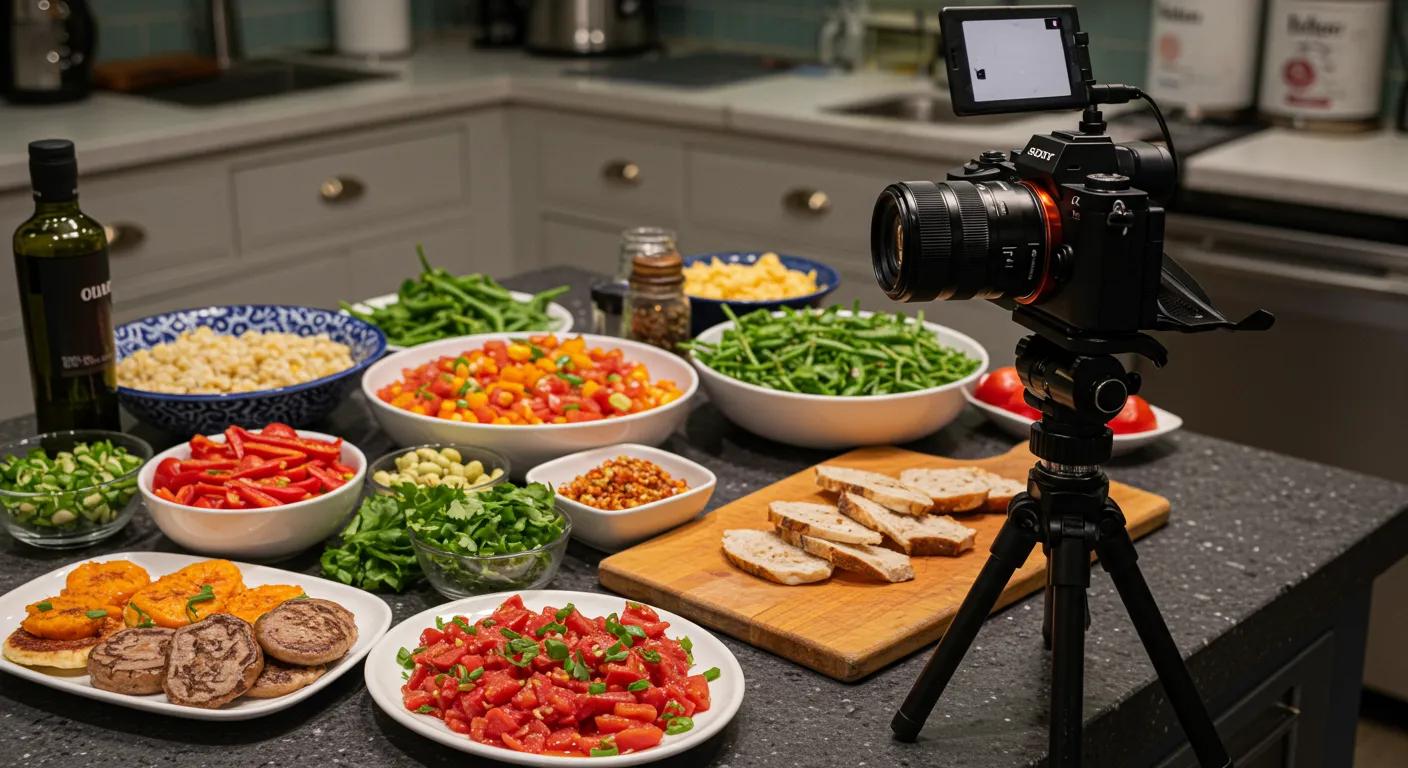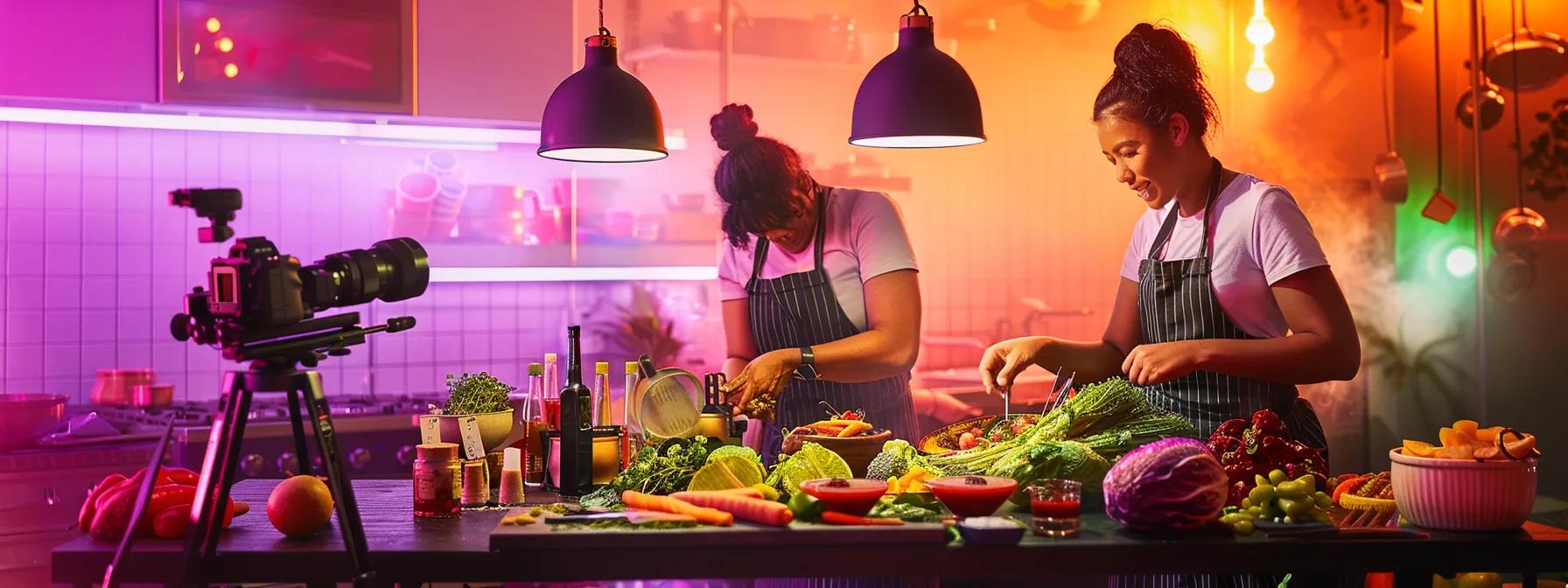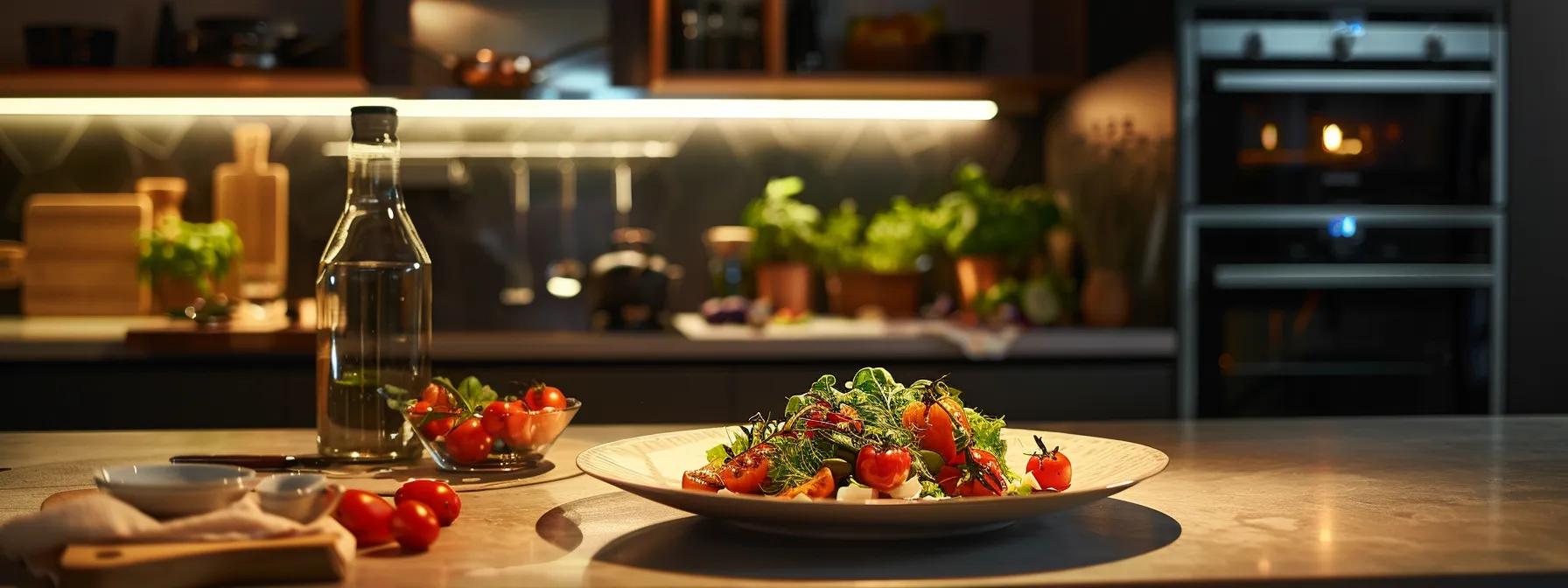The Rise of Food Vlogging as a Trend
Food vlogging has evolved from a niche hobby into a mainstream phenomenon that reshapes how audiences experience culinary art. This form of digital storytelling, enhanced by mouthwatering visuals and engaging narratives, empowers creators to share recipes, innovative kitchen techniques, and the artistry of cuisine in ways that traditional media rarely capture. Built on authenticity and creativity, food vlog channels focus not only on the final dish but also on the entire journey—from ingredient selection and recipe development to grocery shopping and cooking experimentation. In today’s world, viewers crave real insights into cooking processes, practical recipes, and creative presentations that they can recreate at home. Food vlogging connects chefs, home cooks, and casual food enthusiasts with audiences eager to learn and share their culinary adventures.
Social media platforms such as Instagram, TikTok, and YouTube have propelled this trend by enabling content creators to reach global audiences in real time. Live streaming, interactive polls, and direct engagement have transformed static recipe posts into vibrant multimedia experiences. High-definition videos, creative editing with software like Adobe Premiere Pro, appealing thumbnails, and the ease of using smartphones and affordable editing tools have made food vlogging accessible to anyone with a passion for cooking.
This article explores the growing appeal of food vlogging, examines the techniques that make food video content engaging, and highlights the role of social media in expanding this digital frontier. It also discusses how collaborations, partnerships, and strategic monetization plans are essential for long-term success in the competitive world of food content. Ultimately, this guide serves as an essential resource for anyone looking to start a food vlogging journey.
The Growing Popularity of Food Vlogging Among Creators
Food vlogging has grown exponentially as creators harness its rich visual potential and wide accessibility to build loyal audiences. The merging of culinary art with digital creativity offers a unique platform for self-expression. Many content creators choose food vlogging not only as a creative outlet but also as an opportunity to experiment with innovative presentation methods that go beyond conventional cooking shows.
Understand the Appeal of Food Vlogging for Content Creators
At its core, food vlogging marries the passions of cooking and storytelling. Creators who love food culture can experiment with filming styles, narrative techniques, and editing software like Adobe Premiere Pro to produce videos that both inform and entertain. Food vloggers share both the preparation and final presentation, offering tips on ingredient selection, embracing traditional techniques alongside modern culinary trends like veganism or fusion cuisine, and providing behind-the-scenes insights. This transparency builds trust and transforms simple cooking into an interactive learning experience.
Moreover, food vlogging creates communities through live streams, Q&A sessions, and audience polls where viewers actively participate rather than passively consume content.
Learn About the Demographics of Food Vloggers Today
Food vloggers appeal to a diverse audience. Young adults (20–40 years old) are drawn to content that combines practicality with creativity. This tech‐savvy demographic prefers authenticity over overly polished productions, and many creators emerge from urban centers where multicultural influences offer a melting pot of culinary ideas. Viewers from varied cultural backgrounds contribute to a global dialogue centered on ingredients, cooking techniques, and flavor profiles. Additionally, there is a strong representation of individuals seeking healthier lifestyles, as many vloggers emphasize organic produce, plant-based recipes, and sustainable cooking practices. The popularity of quick, digestible content on platforms like TikTok further underlines the appeal of food vlogging.
Discover the Influence of Social Media on Food Vlogging
Social media has played a crucial role in the evolution of food vlogging. Platforms like YouTube enable long-form cooking tutorials and recipe demonstrations while Instagram and TikTok provide shorter, visually engaging clips. The inherent “shareability” of these platforms turns casual viewers into dedicated subscribers. In addition, social media encourages healthy competition and collaboration among creators, with many collaborating on cross-platform projects or co-hosting cooking challenges. As algorithms reward engaging content, food vloggers continuously innovate, invest in better cameras, editing tools, and streamlined production setups, all of which contribute to a more immersive viewing experience.
Analyze the Types of Food Vlogs Gaining Traction Online
Food vlogs vary widely in style and format. One popular type is the detailed recipe walkthrough, where the creator explains each step of a dish’s preparation with close-up shots and voiceovers offering tips. The “vlog-style” narrative captures the entire cooking process—from grocery shopping to plating the final dish—adding a personal touch. Other engaging formats include cooking challenges, taste tests, and thematic vlogs that combine lifestyle elements like travel and health with culinary storytelling. These varied formats meet the diverse tastes of modern viewers and continuously set new standards in digital culinary content.
Recognize the Role of Personality in Food Vlogging Success
In the competitive space of food vlogging, personality is a key differentiator. Successful vloggers are not only great cooks but also engaging storytellers who connect with their audience through humor, passion, and authenticity. Sharing personal anecdotes and cultural backstories humanizes the content, building a trust-based rapport with viewers. This connection often leads to greater engagement—viewers are inclined to subscribe, leave positive comments, and try the recipes themselves.
Examine the Importance of Niche Markets in Food Content
Niche markets are crucial in food vlogging. Focusing on a niche—be it vegan cuisine, gluten-free recipes, ethnic foods, or sustainable cooking—allows creators to differentiate themselves and build tightly knit communities. Catering to specific dietary or cultural needs not only drives higher engagement but also establishes the vlogger as an expert in that domain. This specialization can lead to robust interactions, increased loyalty, and additional revenue opportunities through targeted sponsorships and affiliate marketing.
Techniques to Create Engaging Food Vlog Content

Creating engaging food vlogs requires a blend of high-quality visuals, coherent storytelling, and strategic editing. Whether you are new to vlogging or an experienced creator, mastering these techniques is essential to produce content that stands out.
Identify Essential Tools for Filming Your Food Content
The visual quality of a food vlog is paramount. Essential equipment includes a high-resolution camera or smartphone, tripods, ring lights, and stabilizers to capture steady, well-lit footage. For those seeking a professional look, DSLR or mirrorless cameras can greatly enhance video clarity. Editing software like Adobe Premiere Pro is used to refine footage, add effects, transitions, and overlay text to emphasize recipe steps. Clear audio is also critical, and using external microphones to capture both narration and ambient sounds further immerses viewers in the culinary experience.
A well-equipped kitchen studio not only improves technical quality but enhances the overall polished aesthetic of the vlog, strengthening brand identity.
Master the Art of Storytelling in Food Vlogs
Effective storytelling elevates a food vlog from a simple tutorial to a compelling narrative. This begins with an engaging introduction—perhaps sharing the backstory of a cherished family recipe or the creative process behind a fusion dish. The narrative should flow naturally from ingredient selection through cooking to the final presentation. A strong narrative is enhanced by the creator’s personality, with expressive commentary and contextual anecdotes that enrich the viewer’s experience and inspire them to try the recipes at home.
Utilize Effective Editing Styles for Food Videos
Editing transforms raw footage into a cohesive video. A mix of dynamic cuts to maintain interest and slow, detailed shots to highlight the cooking process is essential. Techniques such as time-lapse sequences, jump cuts, and creative transitions keep the narrative engaging. Advanced editing allows for overlaying graphics and background music that sets the mood. Balancing pacing—avoiding overly long clips or cuts that are too fast—ensures important details are retained while keeping viewers engaged. A well-planned storyboard or shot list can help achieve this balance.
Incorporate Visual Appeal Through Plating and Presentation
The presentation of food is as important as taste. Plating and creative presentation techniques not only make dishes look appetizing but also inspire viewers to recreate the elegant aesthetics at home. Attention to details—such as dishware choice, color contrast, and lighting—transforms a recipe into a work of art. Slow-motion sequences and close-up shots of the final dish serve as a visual reward that underscores the vlog’s creative flair and reinforces the vlogger’s brand identity as both an artist and a chef.
Develop Unique Recipes to Attract a Dedicated Audience
At the heart of successful food vlogging is the creation of unique recipes that reflect the creator’s personal style. Innovate by experimenting with unexpected ingredients or new preparation methods that challenge conventional cuisine. Whether modifying a traditional pasta dish by incorporating vegan alternatives or infusing superfoods for a modern twist, originality attracts viewers and encourages repeated engagement. Detailed explanations of the recipe development process add educational value and inspire viewers to experiment in their own kitchens.
Engage Viewers With Interactive Food Challenges and Polls
Interactive elements are key to fostering a loyal community. Food challenges, quizzes, and live polls not only entertain but prompt viewers to actively participate. For example, a timed cooking contest or a “try not to drool” challenge can engage audiences and encourage them to share their experiences or vote on the best rendition. Live Q&A sessions provide real-time feedback and help tailor future content to viewer interests, further strengthening the connection between creator and audience.
The Role of Social Media Platforms in Food Vlogging
Social media is integral to the success of food vlogs, offering platforms for both long-form and short, engaging content. Each platform has its strengths and helps build a multi-channel presence.
Investigate the Best Platforms for Food Vloggers
YouTube is ideal for detailed cooking tutorials and recipe demonstrations, thanks to its emphasis on long-form content and robust search algorithms. Instagram offers high-quality imagery and story features that capture the aesthetics of dishes, while TikTok’s short-form format is perfect for quick recipe tips and behind-the-scenes clips. Emerging platforms like Pinterest can also be leveraged for infographics and step-by-step photo guides. Understanding these unique strengths allows vloggers to tailor their content for maximum reach and engagement.
Utilize Instagram for Visual Storytelling in Food Videos
Instagram excels at visual storytelling. Food vloggers use its grid layout to share images that capture every detail of a recipe. The platform’s story feature mixes video clips, behind-the-scenes moments, and interactive polls to create dynamic narratives. Maintaining a consistent aesthetic—whether it’s minimalist or vibrant and rustic—reinforces the brand and helps build a cohesive community.
Leverage TikTok Trends to Gain Visibility for Food Vlogs
TikTok has rapidly become a catalyst for viral food content. Its algorithm favors fresh, engaging videos regardless of follower count, giving emerging creators a chance to reach wide audiences. Trends such as quick recipe hacks and time-lapse cooking sessions, paired with popular music and creative transitions, condense complex recipes into digestible and fun videos. Features like duets and stitches further encourage collaboration and community building, amplifying overall visibility.
Create a YouTube Channel Dedicated to Food Content
A dedicated YouTube channel remains the cornerstone for food vloggers. Regular uploads, high-quality videos, and organized playlists attract viewers who seek in-depth tutorials and storytelling. Optimizing videos with SEO techniques, engaging thumbnails, and clear, keyword-rich descriptions enhances discoverability. Supplementing core content with behind-the-scenes footage, Q&A sessions, and seasonal series helps build a loyal subscriber base while driving monetization through ads, sponsorships, and merchandise.
Connect With Audiences via Live Streams and Q&As
Live streams and Q&A sessions offer direct, real-time interactions with audiences. These sessions allow vloggers to demonstrate recipes live, answer questions instantly, and address cooking challenges on the spot. Such interactions create a lively community atmosphere, build trust, and encourage repeat engagement. Real-time feedback also enables creators to refine their content based on viewer preferences.
Measure Engagement Metrics to Improve Your Food Vlog
Analyzing engagement metrics is critical for continual improvement. Metrics such as view counts, watch time, click-through rates, and audience retention help determine which segments of content perform best. Using analytical tools provided by YouTube, Instagram, and TikTok, food vloggers can fine-tune their content strategy, schedule posts effectively, and explore collaboration opportunities to maintain high levels of engagement.
Collaborations and Partnerships in Food Vlogging

Collaborations and partnerships significantly expand a food vlogger’s reach and enhance content quality. By working with other creators, brands, local restaurants, and chefs, vloggers can access new expertise and resources while attracting a broader audience.
Identify Potential Collaborators in the Food Niche
Potential collaborators include other food vloggers with complementary specialties, local chefs, gourmet markets, and culinary schools. Partnerships with these entities can result in behind-the-scenes tours, exclusive recipes, and unique content ideas that add authenticity and diversity to the channel. Such collaborations not only expand audience reach but also build credibility within the culinary community.
Understand the Benefits of Cross-Promoting With Other Vloggers
Cross-promotion leverages the audiences of multiple creators to drive mutual growth. Through guest appearances, co-hosted sessions, and joint social media campaigns, food vloggers can introduce their content to new viewers. This trust-based exchange reinforces community ties and often results in increased engagement and subscriber growth.
Approach Brands for Sponsorship and Partnership Opportunities
Collaborating with reputable brands is vital for monetization. Food vloggers can secure sponsorships by presenting clear, data-backed proposals that highlight their audience demographics and engagement metrics. Successful brand partnerships not only provide financial support but also enhance production quality through sponsored segments and integrated product placements.
Develop Joint Projects to Expand Your Viewer Base
Joint projects such as themed cooking challenges, recipe remixes, or seasonal events provide creators with opportunities to pool resources and audiences. These projects stimulate creative experimentation and reduce individual production workload, while also increasing overall visibility and community engagement.
Build Relationships With Local Restaurants and Chefs
Forging relationships with local restaurants and chefs adds authenticity to food vlogging. Such partnerships offer exclusive content like chef interviews, tasting sessions, and behind-the-scenes kitchen demonstrations. These collaborations enrich content by showcasing regional culinary traditions and innovative cooking methods, while also solidifying the creator’s reputation within the local food scene.
Create Collaborative Recipes That Excite Both Audiences
Developing joint recipes that merge diverse culinary traditions is an excellent way to showcase creative synergy. Through brainstorming, recipe testing, and live demonstrations, collaborators can create innovative dishes that captivate audiences. These collaborative recipes not only provide fresh content ideas but also encourage viewers to experiment with new flavors and techniques at home.
Monetizing Your Food Vlog Successfully
Turning creative passion into profit requires balanced monetization strategies that maintain content integrity. Food vloggers have various revenue streams—from advertising and sponsorships to affiliate marketing, merchandise, and subscription-based models.
Explore Various Revenue Streams Available for Vloggers
Common monetization methods include affiliate marketing (earning commissions on kitchen gadgets and ingredients), advertising revenue on platforms like YouTube, and sponsored content integrated seamlessly into vlogs. Other opportunities include creating branded merchandise or offering exclusive content through online courses and subscription services. A diversified revenue approach ensures that monetized content remains authentic and valuable to viewers.
Create Engaging Merchandise Related to Your Food Brand
Developing merchandise such as chef hats, aprons, kitchen tools, or exclusive recipe e-books can reinforce brand identity while generating income. Successful merchandise resonates with viewers by reflecting the creator’s unique style and philosophy. Each product serves as both a revenue source and a marketing tool, expanding the channel’s reach through everyday use.
Join Affiliate Marketing Programs for Food Products
Affiliate marketing enables food vloggers to earn passive income by recommending products that align with their culinary expertise. By integrating affiliate links naturally in video descriptions and social media posts, creators can monetize their recommendations while ensuring transparency and authenticity. Detailed product reviews and tutorials help build long-term viewer trust while driving sales.
Offer Cooking Classes or Workshops to Your Audience
Expanding into educational services, such as live cooking classes and workshops, provides an interactive revenue channel. Whether conducted virtually or in person, these sessions cater to a range of skill levels and establish the creator as an expert. Hands-on experiences, exclusive tutorials, and personalized feedback not only generate income but also deepen community engagement.
Attract Sponsors With a Solid Viewer Engagement Strategy
A strong viewer engagement strategy attracts high-value sponsors. By showcasing interactive sessions, detailed analytics, and consistent audience participation, food vloggers can present convincing metrics to potential sponsors. Well-aligned sponsorships—through product placements or dedicated segments—enhance both content quality and financial stability.
Develop Subscription-Based Content to Ensure Steady Income
Subscription-based models offer predictable income by providing dedicated fans with exclusive content. Platforms like Patreon or YouTube Memberships can feature early video releases, bonus tutorials, and private live streams. Tailoring subscription tiers to different audience segments fosters long-term loyalty and builds a stable financial foundation for continuous creative growth.
Trends Shaping the Future of Food Vlogging

As technology and consumer preferences evolve, food vlogging must adapt to remain relevant. Future trends are likely to be driven by technological innovations, cultural shifts, and an increased focus on sustainability and authenticity.
Stay Updated With Emerging Culinary Trends in Vlogging
Food vloggers must keep pace with emerging trends such as global fusion cuisine, health-centric recipes for diets like veganism and keto, and the popularity of hyper-localized food narratives. Staying informed through industry reports, food expos, and social media discussions enables creators to update their content strategies and remain at the cutting edge of culinary innovation.
Incorporate Sustainability Into Your Food Content Strategy
Sustainability is increasingly important in the culinary world. Food vloggers can integrate eco-friendly practices by showcasing techniques that reduce waste, feature seasonal and locally sourced ingredients, and promote environmentally friendly kitchen tools. This approach not only appeals to eco-conscious viewers but also reinforces a commitment to responsible cooking practices.
Embrace Culture by Exploring International Cuisines
Exploring international cuisines enriches food vlogs by offering diverse perspectives on cooking. Videos that delve into traditional methods, cultural significance of ingredients, and historical context provide educational insights and inspire culinary creativity. Embracing a global approach also opens opportunities for cross-cultural collaborations, appealing to viewers eager to experience flavors from around the world.
Utilize Advanced Technology Like AR and VR in Food Vlogs
Advanced technologies such as augmented reality (AR) and virtual reality (VR) are poised to revolutionize food vlogging. AR can overlay interactive elements during recipe demonstrations, while VR offers immersive experiences that take viewers inside a virtual kitchen environment. Early adopters of these technologies can set new benchmarks for viewer engagement by creating dynamic and interactive culinary content.
Predict How Consumer Preferences Affect Food Content Creation
Consumer preferences continue to evolve with an increased demand for health-conscious, authentic, and convenient culinary content. By leveraging data analytics and viewer feedback, food vloggers can tailor their content to address trends like dietary mindfulness and artisanal craftsmanship. This responsiveness ensures sustained relevance and long-term audience growth.
Anticipate the Evolution of Food Vlogging in the Coming Years
Looking ahead, food vlogging is expected to blend data-driven strategies with advanced production techniques to meet evolving consumer demands. Future trends may include deeper integration of interactive technologies, more personalized content through data analytics, and hybrid collaborations between traditional culinary experts and digital influencers. As e-commerce and direct-to-consumer platforms expand, food vloggers will likely explore new revenue avenues such as exclusive merchandise and virtual cooking experiences.
Frequently Asked Questions
Q: What are the most important tools for filming high-quality food vlogs? A: High-quality food vlogs require reliable cameras or smartphones, stabilizers, ring lights, and external microphones for clear audio. Editing software like Adobe Premiere Pro is essential for refining footage and adding visual effects, ensuring a polished final product.
Q: How can food vloggers effectively monetize their channels without compromising content quality? A: Diversifying revenue streams through affiliate marketing, sponsored content, merchandise sales, and subscriptions is key. Integrating these monetization strategies seamlessly into the content while maintaining transparency and authenticity is essential to retain viewer trust.
Q: What role do social media platforms play in the success of food vlogs? A: Social media platforms such as YouTube, Instagram, TikTok, and Pinterest enable food vloggers to reach diverse audiences through different content formats. They also foster engagement through interactive features and analytics, helping creators refine their strategies and build dedicated communities.
Q: How can food vloggers incorporate sustainability into their content? A: By showcasing locally sourced, organic, and seasonal ingredients along with zero-waste cooking practices, vloggers can promote environmentally conscious methods. This not only appeals to eco-friendly audiences but also sets a positive standard within the culinary community.
Q: Why is storytelling so important in food vlogging, and how can it be improved? A: Storytelling transforms a simple recipe into a compelling narrative that connects emotionally with viewers. Enhancing storytelling with personal anecdotes, behind-the-scenes insights, and clear narrative arcs makes the content memorable and engaging.
Q: What future technologies are expected to impact food vlogging the most? A: Augmented reality (AR) and virtual reality (VR) are set to revolutionize food vlogging by providing immersive, interactive experiences. Additionally, advancements in artificial intelligence and data analytics will help tailor content to evolving viewer preferences.
Q: How can collaboration enhance the growth of a food vlogging channel? A: Collaboration combines the creative strengths and audiences of multiple creators, leading to cross-promotional benefits and innovative content. Joint projects, co-hosted events, and guest appearances foster a richer community and drive long-term engagement.
Final Thoughts
Food vlogging is a dynamic convergence of culinary art and digital innovation that is redefining how audiences experience food. By leveraging modern filming tools, engaging storytelling, strategic editing, and interactive social media, food vloggers create content that is both educational and visually captivating. Through thoughtful collaborations, targeted niche content, and diversified monetization strategies, creators build strong personal brands and sustainable businesses. As emerging technologies and evolving consumer preferences continue to shape the industry, food vlogging promises to remain a vibrant and influential component of online content creation.
